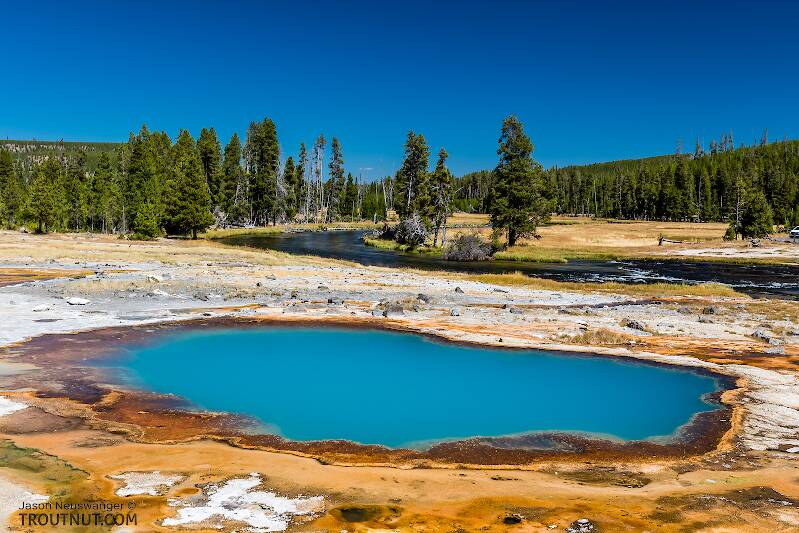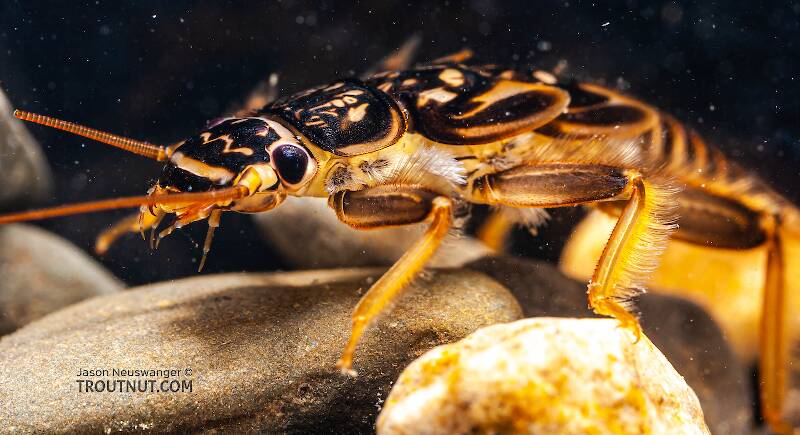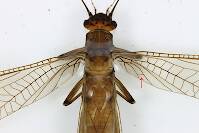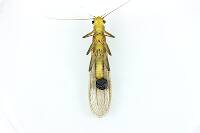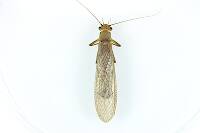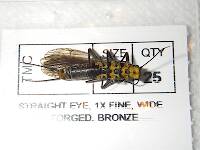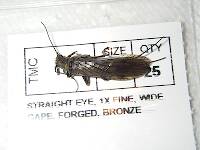
Blue-winged Olives
Baetis
Tiny Baetis mayflies are perhaps the most commonly encountered and imitated by anglers on all American trout streams due to their great abundance, widespread distribution, and trout-friendly emergence habits.
Featured on the forum


Troutnut is a project started in 2003 by salmonid ecologist Jason "Troutnut" Neuswanger to help anglers and
fly tyers unabashedly embrace the entomological side of the sport. Learn more about Troutnut or
support the project for an enhanced experience here.
PeterO
Posts: 8
Posts: 8
PeterO on Jun 6, 2007June 6th, 2007, 3:58 am EDT
Jason-
This is actually a specimen of Acroneuria abnormis. Paragnetina species have a complete set of spinules/setae on the occiput, which this guy is lacking. On a semi-related subject, could you forward me the collection data for the Arcynopteryx paralella you got from the Catskills? Thanks a bunch.
This is actually a specimen of Acroneuria abnormis. Paragnetina species have a complete set of spinules/setae on the occiput, which this guy is lacking. On a semi-related subject, could you forward me the collection data for the Arcynopteryx paralella you got from the Catskills? Thanks a bunch.
GONZO on Jun 6, 2007June 6th, 2007, 4:15 am EDT
Thanks, Peter. The ID mistake was mine, not Jason's. When he collected this specimen, I took a quick glance at it and assumed it was P. immarginata (which is one of the more common of the highly marked "golden stones" in the Poconos). When I returned to see his close-up pictures, I noticed the difference in the dorsal markings and realized I had made a hasty judgment.
Troutnut on Jun 6, 2007June 6th, 2007, 4:28 am EDT
Thanks for the correction, Peter. I'll get you that Arcynopteryx info.
Gonzo, I guess I can forgive you... ;) Really, thanks for showing me to that collecting spot! I got the first Cinygmula nymph I've collected, so it was worth it for that, among other things.
Gonzo, I guess I can forgive you... ;) Really, thanks for showing me to that collecting spot! I got the first Cinygmula nymph I've collected, so it was worth it for that, among other things.
Jason Neuswanger, Ph.D.
Troutnut and salmonid ecologist
Troutnut and salmonid ecologist
GONZO on Jun 6, 2007June 6th, 2007, 4:59 am EDT
Jason,
The forgiveness is appreciated, although it also means that we failed to collect a P. immarginata specimen for your site. But, the Cinygmula was a revelation to me as well. And I'm still trying to figure out why we found mature D. lata (cornuta) nymphs two weeks before they normally emerge in that stretch. That little stream was abnormally low and warm, but I'm not sure that accounts for the difference.
The forgiveness is appreciated, although it also means that we failed to collect a P. immarginata specimen for your site. But, the Cinygmula was a revelation to me as well. And I'm still trying to figure out why we found mature D. lata (cornuta) nymphs two weeks before they normally emerge in that stretch. That little stream was abnormally low and warm, but I'm not sure that accounts for the difference.
Huckleberry on Oct 1, 2010October 1st, 2010, 4:02 am EDT
Hey guys,
I don't see a cercal fringe, even in the closeups. As you know, this is a key characteristic of Acroneuria, sp. Could it be blending in with the white background?
I'm not all that familiar with abnormis. Clue me in.
Thanks.
I don't see a cercal fringe, even in the closeups. As you know, this is a key characteristic of Acroneuria, sp. Could it be blending in with the white background?
I'm not all that familiar with abnormis. Clue me in.
Thanks.
GONZO on Oct 1, 2010October 1st, 2010, 8:21 am EDT
Could it be blending in with the white background?
Yes. If you click on the full size view of photo #9, you can make out a fine faint fringe of long hairs along the inside edges of the cerci. In photo #5, the (whitish) fringe along the inside of the right cercus partially obscures part of the hook.
In general appearance, A. abnormis nymphs lack anal gill tufts and tend to have broadly concolorous (dark) tergites and femora instead of the narrower dark abdominal banding and leg bands often found in sympatric species like lycorias or carolinensis. The pale band across the back of the head also tends to be more narrowly linear.
Quick Reply
Related Discussions
Topic
Replies
Last Reply
Acroneuria specimen moved from genus to species level
In Acroneuria carolinensis Stonefly Nymph by Entoman
In Acroneuria carolinensis Stonefly Nymph by Entoman
0
Mar 11, 2012
by Entoman
by Entoman
4
Mar 11, 2012
by Entoman
by Entoman
0
May 3, 2007
by Troutnut
by Troutnut
9
Jun 17, 2015
by Oldredbarn
by Oldredbarn
8
Jun 5, 2007
by Dinerobyn
by Dinerobyn
4
May 2, 2010
by SlateDrake9
by SlateDrake9
1
Oct 28, 2008
by GONZO
by GONZO

